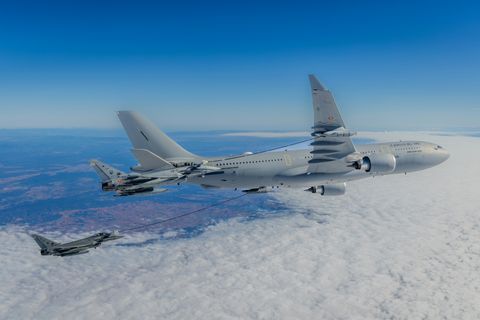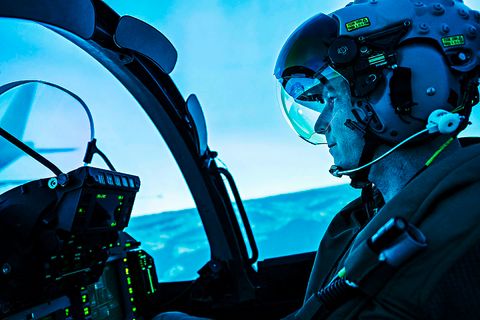A400M in Sudan: Playing a crucial role in the evacuation of foreign citizens

Tensions had been running high for months. Clashes between the Sudanese Army and its rival, the paramilitary Rapid Support Forces, erupted in mid-April in the streets of Sudan, especially in the capital, Khartoum.
A spiral of violence spread rapidly with hundreds of civilians dead and thousands injured or displaced. This increasingly volatile situation prompted a list of nations to establish airlifts to evacuate diplomats and foreign citizens.
A400M in Sudan: key role in evacuating foreign citizens
France: The first to land at Wadi Seidna
Due to the extremely rapid deterioration in the security situation, France launched Operation SAGITTAIRE to rescue French nationals, United Nations employees and persons from partner nations.
The international airport of Khartoum was one of the hotspots of the ongoing conflict, making it impossible to ferry people. As an alternative, France chose the Wadi Seidna military air base - 25 km north of Khartoum, to be the first country to land in.
“There was a threat all around the airports. The added value of the A400M is that it goes fast. So, we could take off from Djibouti very quickly and, after two hours of flight, we were on the ground, where the evacuations were taking place. That allowed us to evacuate a lot of passengers out of this area that was under high threat”, explained Commandant Nicolas "Fish", A400M pilot with the 1/61st Air Transport Wing of the French Air Force in Orleans-Bricy.
France transported a total of 538 people with its airlift capability, mainly due to the seven rotations of its A400Ms. “The contribution of the A400M is, of course, its capacity to carry passengers. In this case, to evacuate them from an area which was completely contested”, Fish added.

(Copyright: Etat-major des Armées / France)
Spain: Landing in the dark without infrared lights
After holding diplomatic conversations to secure the airstrip of Wadi Seidna, Spain launched its Non-combatant evacuation operation (NEO). Three Spanish A400M were involved in the mission: the first one transported two multi-purpose light tactical vehicles (VAMTAC) as well as Spanish Army personnel, while the other two ‘Grizzlies’ deployed the rest of the soldiers, vehicles and different material. A fourth A400M was waiting in the neighbouring Djibouti in case of emergency.
“It was quite a complicated operation. There were tense moments when the A400Ms landed, as only the first aircraft landed in daylight. The other two had to do it completely in the dark and without being allowed to place infrared lights beforehand to get a minimum idea of the size of the runway, which was totally unknown to us,” Captain Íñigo Peña, A400M pilot with the 31st Wing of the Spanish Air Force, told the Spanish newspaper ABC.
In 48 hours, a total of 114 people were evacuated, 34 were Spanish, while the others came from Argentina, Ireland, Italy, Mexico, Poland, Portugal and Venezuela. After landing in Djibouti, where Spain is deployed as a member of Operation Atalanta -a counter-piracy mission-, 70 people flew back to Spain in an Airbus A330.
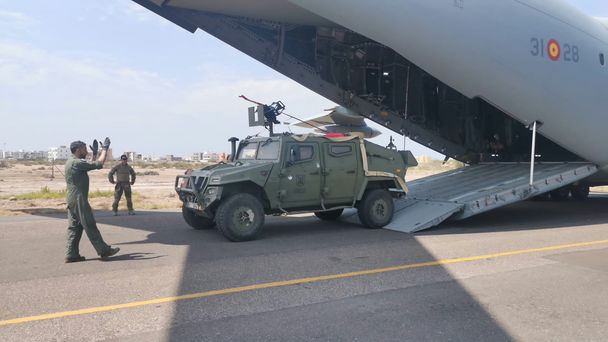
(Copyright: Estado Mayor de la Defensa / Spain)
Germany: “A huge achievement”
After getting the approval from the German government, up to 1,600 soldiers were deployed in the Middle East and North Africa to ensure the safe return of its nationals from Sudan.
Like its allies, Germany chose the Wadi Seidna airstrip for the airlift, in an operation described as a "huge achievement," by German Foreign Minister, Annalena Baerbock.
Over 700 people -200 of them German- left Sudan in several A400Ms destined for Jordan’s al-Azrak air base, where the Luftwaffe has had a contingent deployed since 2017.
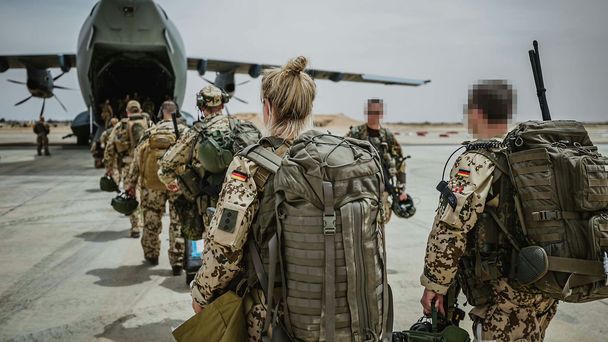
(Copyright: Bundeswehr / Germany)
United Kingdom: +2,000 evacuated in the A400M
The United Kingdom took over Wadi Seidna airport from the Germans once they finished their sorties. Departing from the Royal Air Force’s base at Akrotiri in Cyprus, the A400Ms from the Air Mobility Force had the mission to carry out the exit of British residents in a swift mission.
During Operation Polar Bear, the A400Ms did much of the heavy lifting evacuating more than 2,000 people, with flights with up to 198 people on board of the aircraft, according to the Royal Air Force.
“The A400M has been really good, it’s being constantly used, we're going backwards and forwards, repeatedly everyday and it's certainly proven itself on this operation. It’s an asset to the Air Mobility Force,” said A400M loadmaster flight sergeant Jim Rothwell.
“Non-combatant evacuation operations don’t last very long, but all the team pulls together to get the job done. It’s given the newer crew members operational experience”.
The United Kingdom has used the A400M based at Brize Norton for humanitarian efforts in the earthquake of Turkey, the departure from Afghanistan -the largest RAF operation since the Berlin Airlift in 1948-1949, as well as the Caribbean and other areas affected by natural disasters.
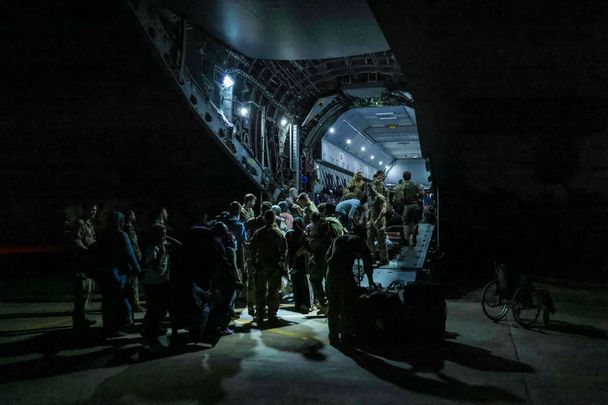
(Copyright: Royal Air Force / United Kingdom)
A reliable platform for humanitarian crisis
Equipped with four powerful Europrop TP400, the A400M can operate in austere, short and unpaved runways and transport up to 116 people, vehicles or a combination of both, up to a payload of 37 tonnes.
Thanks to these capabilities, the A400M has proven to be a reliable platform for its customers, ensuring safe and rapid evacuations, as demonstrated in Sudan and during the events in Kabul in 2021, when the Taliban took control of the country and thousands of people were forced to leave it.
A400M and A330 MRTT: immediate support in the aftermath of earthquake in Turkey and Syria
The two earthquakes that hit Turkey and Syria in February, 2023, proved that humanitarian aid by air was the fastest path to provide relief.
The Turkish Air Force deployed many of its 10 A400M fleet in the AirAid Corridor deployed in the earthquake areas. The aircraft conducted over 300 sorties to bring much needed relief and provide a safe evacuation for civilians.
Other European air forces joined the humanitarian operation, from the Spanish and Belgium A400Ms and French A330 MRTT deploying firefighters and emergency teams to the German and Royal Air Force A400Ms delivering critical supplies and the Royal Malaysian Air Force A400Ms transporting a mobile hospital.
Click here for more information on A400M

